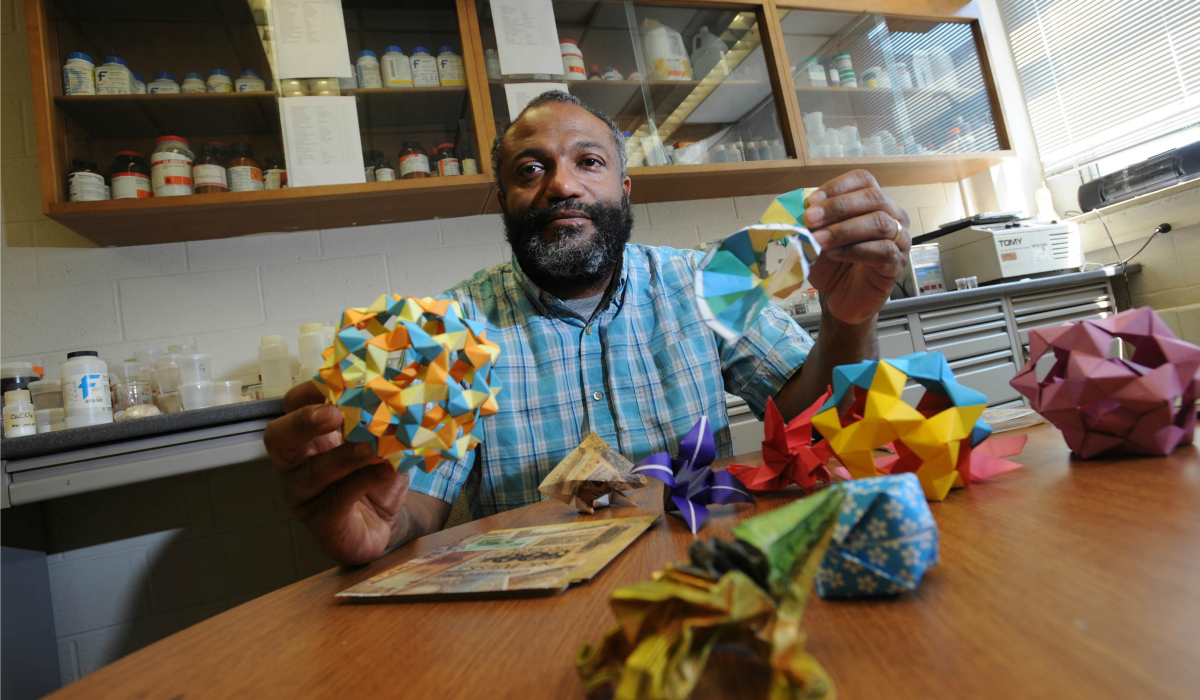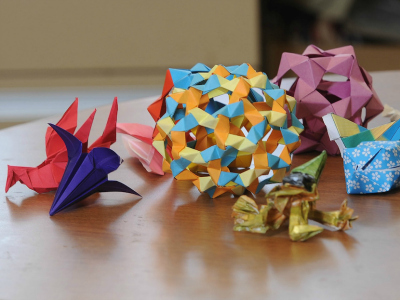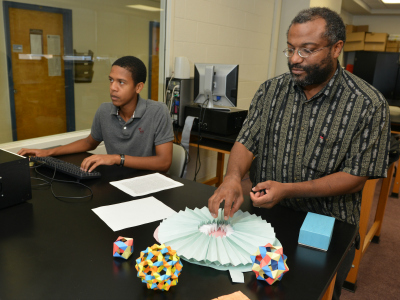

On a recent afternoon, Otto Wilson, an associate professor of biomedical engineering, spent an hour teaching freshmen engineering students the basics of origami: how to fold individual post-it notes into pentagon-hexagon zig-zag units, or PHIZZ units — individual paper connectors that can be attached to form larger 3-D structures, like cubes or balls.
It may seem like an unorthodox method for teaching college students, but Wilson is passionate about merging creative thinking with engineering. He believes origami can engage students in a more meaningful way, helping them to better remember and think about what they learn.
“The biggest thing is that learning doesn’t have to be in a basic box,” he said. “It can jump outside the box and take students a lot of different places.”
Wilson finds aspects of origami everywhere, from cars designed to bend on impact in a way that protects the occupants to deployable NASA telescopes that unfold after their launch to structures in nature that enhance their structural integrity and strength through intricate folds.
 “Over the last 50 years or so, there’s been an explosion in the level of complexity of things people can create using origami design principles,” Wilson said. “A couple of years ago I asked a key question that lead to a unique idea — can we actually fold paper to make organs for the body?”
“Over the last 50 years or so, there’s been an explosion in the level of complexity of things people can create using origami design principles,” Wilson said. “A couple of years ago I asked a key question that lead to a unique idea — can we actually fold paper to make organs for the body?”
In his research, Wilson studies how to make biologically-inspired origami paper, paper that is specifically designed to be a platform for tissue and organ growth. So far, he and his students have used the paper to grow bone with future plans for muscle, and cardiac cells and tissue. By using the techniques of origami, he believes that strategically folded paper can be transformed into fully-functioning bones and organs for the human body.
“A simple model we’re working on now could be used for bone tissue synthesis,” he said. “You roll a tube and grow bone on the outside  and grow marrow tissue on the inside and you could literally have a femur.”
and grow marrow tissue on the inside and you could literally have a femur.”
Wilson plans to continue using origami techniques to build more complex structures out of muscle and cardiac cells. His ultimate goal is to one day fold a fully-functioning human heart.
“You can actually fold hearts already in origami. One of my favorite origami artists designed a heart with an arrow coming out of it,” Wilson said. “We’re just taking it to another level by asking the question, ‘Can we actually mimic the structural development of the heart and fold a scaffold that can become a real heart?’”
“The main thing about origami is from something very simple you can make very extravagant objects,” he said. “If you think about the way God works with people, the simplest things in life can lead to great benefit and great levels of service.”